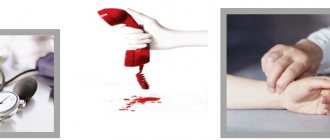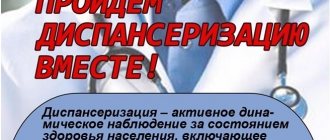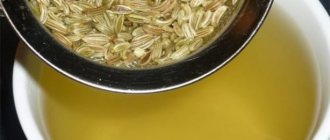Just a couple of decades ago, complaining about high blood pressure was the lot of older and elderly people. Today, arterial hypertension has become younger, like many diseases, due to the costs of today's lifestyle and level of workload. Increasingly, the diagnosis of hypertension is being made to young people 20-30 years old. The vast majority of cases of persistent increases in blood pressure are caused by one or another pathology of the cardiovascular system. In approximately 5-10%, the reason lies in the development of complications due to renal or endocrine diseases. A blood pressure of 120/80 mmH is considered normal at a young age. rt. Art. or slightly lower (of course, individually determined deviations from the norm are possible). Blood pressure readings up to 140/90 are considered a prehypertensive state, 140/90 – 160/100 indicate stage 1 hypertension, and above 160/100 indicate stage 2 hypertension. In this case, we are not talking about infrequent episodic rises, for example, against the background of emotional stress.
The problem of hypertension at a young age has two negative aspects. First, in young patients, arterial hypertension may not produce significant symptoms for a long time; second, even in the presence of clearly defined signs of hypertension, a young person quite often ignores the need to visit a doctor and long-term constant treatment and the need to maintain a healthy lifestyle.
What blood pressure is considered high?
Blood pressure (blood pressure, blood pressure) is the force with which blood acts on the walls of the vascular bed. The indicator is measured with a tonometer and recorded in the form of two values:
- Systolic blood pressure is “upper”. Indicates the level of pressure at the moment of active contraction of the heart - systole.
- Diastolic blood pressure is “lower”. Indicates the level of pressure at the moment of relaxation of the heart - diastole.
The “classical” normal blood pressure is considered to be 120/80 mmHg. Art. Current recommendations include an increase in blood pressure to 129/84 mmHg. Art. is also not considered a pathology. If, during several measurements, the numbers on the tonometer are within the range of 130–139/85–89 mm Hg. Art., they talk about “high normal” pressure, and exceeding these values is a clear sign of hypertension.
The mechanical reason for the increase in the force of action of blood on the vascular walls is the narrowing of the arteries, which can occur under the influence of a number of external and internal factors (Fig. 1).
Figure 1. The mechanism of increased blood pressure is vasoconstriction. Source: MedPortal
High blood pressure may not manifest itself for a long time. Vivid symptoms occur only with a sharp rise in pressure. Under such conditions, a person’s heart works “for wear and tear”: the heavier the blood passes through the vessels, the more effort the heart muscle has to put in. This leads to a constant negative impact not only on the human cardiovascular system, but also on the kidneys, brain structures, and visual analyzer.
Hypertension can only be reliably detected through systematic blood pressure measurements. However, some symptoms may suggest increased blood pressure. These include:
- headache;
- dizziness;
- disturbances of consciousness (cloudness);
- periodic tingling, moderate pain in the chest;
- increased heart rate;
- increased fatigue;
- feeling of lack of air (shortness of breath) during physical activity;
- redness of the facial skin;
- nosebleeds for no apparent reason.
Hypertension is a very common pathology. According to WHO, about 30% of the world's adult population suffers from high blood pressure, and complications of the disease (including heart attacks and strokes) lead to approximately 9 million deaths annually. At the same time, only 10% of hypertensive patients follow doctors’ recommendations and receive treatment, and about 40% are not even aware of their diagnosis.
Classification of hypertension depending on the causes
Cases of persistent high blood pressure are usually divided into two groups:
- Primary hypertension (essential hypertension). In this case, the specific cause of the development of the disease cannot be identified: the pathology develops under the influence of a complex of factors. Cases of primary forms of the disease account for 90–95% of hypertension.
- Secondary hypertension (symptomatic), when disturbances in vascular tone become a complication of the underlying disease or appear under the influence of a specific cause, accounts for 5% of all cases. With symptomatic hypertension, the cause of increased blood pressure can be identified and excluded by normalizing the values.
Such statistics do not mean that in most cases it is impossible to influence the increase in blood pressure. With the right approach, it is possible to minimize risk factors even with primary hypertension.
Hypertension. Hypertension
Terminology
The question of how hypertension differs from hypertension is one of the most frequently asked, and it seems advisable to start with terminology.
We say “good tone”, meaning vivacity, energy and readiness for action; otherwise, we rely on “tonic” drinks. The tensor is called the “tensor muscle”, the extensor is the extensor muscle. Stresses in the cross section of a solid body are described by tensor algebra equations. “Tone” translated from Greek means tension (eg, muscle hypertonicity - inability to relax); The Latin “tensio” is translated in almost the same way, but with an even more mechanical connotation: it means compressive, pressure, and tensile stresses. The last two words in this context are key.
Both hypertension and hypertension are pathologically high blood pressure, which gradually stretches and thins the vascular walls. In ICD-10 (International Classification of Diseases), both terms are used as nosological units, and one of them usually follows the other in parentheses, for example: “Hypertensive heart disease (hypertensive heart disease) with a predominant lesion ...”, etc. Perhaps the wording will become clearer in the eleventh edition of the ICD, which is expected to be adopted in 2018.
In the literature one can find different interpretations of the terms “hypertension” and “hypertension”, including the opinion that they are absolutely synonymous. However, any linguist knows that absolute synonyms in languages (especially in such a strict and clear language as medical) practically do not occur, i.e. one or another semantic connotation is always present in synonyms. Therefore, a number of sources give a different interpretation, simple, brief and logically separating the two concepts.
Hypertension is a disease itself, which is characterized (like other diseases) by certain causes and risk factors, patterns of development, typical variants of the clinical picture and outcome. Hypertension is a pathophysiological phenomenon of elevated blood pressure; in addition, it is a set of interrelated symptoms that manifest hypertension.
In short: hypertension is a disease, hypertension is a typical syndrome for it. (In passing, we note that the same syndrome can accompany different diseases, anomalies and conditions).
One way or another, the problem of chronically high pressure in the blood vessels remains so acute around the world that its non-medical synonyms most often become darkly poetic images like “the silent killer”, “silent killer”, “disease of the century”, “curse of civilization” and etc. These definitions cannot be called groundless: hypertension has a tendency towards a long latent or asymptomatic course, and the very first clinical manifestation - if it is a hypertensive crisis, myocardial infarction, acute cerebrovascular accident - can be fatal.
As with other “diseases of the century,” epidemiological estimates of hypertension vary widely depending on region, the dominant diagnostic approach, the composition of the samples studied, and many other factors. In all likelihood, clinically significant hypertension affects between 20 and 50 percent of the world's adult population. About half of them don't know about it. Of the remaining, informed half, a significant portion of patients, for various reasons, do not take any therapeutic or preventive measures.
At the same time, in regularly published statistical data on the causes of non-violent mortality, cardiovascular diseases consistently occupy the first position, and the largest contribution to “cardiovascular” mortality belongs to arterial hypertension (at least in Russia this is the case).
Medicine does not stand still; Thanks to the intensive development of theory and methodology, technology, and pharmacology, the mortality rate from arterial hypertension has been significantly reduced in the last 30-40 years. And yet the situation remains, to put it mildly, unsatisfactory.
Who is at risk?
There are a number of factors known to significantly increase the risk of hypertension. These are conditions or events that determine the likelihood of a persistent increase in blood pressure.
They can be divided into two main categories - unmanaged (unchangeable, unmodifiable) and managed (changeable, modifiable).
Uncontrollable risk factors
The chances of developing hypertension inevitably increase with age: men over 55 years of age and women after reaching 65 years of age are at risk.
In addition, uncontrolled risk factors for hypertension include:
- Heredity. A family history of high blood pressure in various studies is indicated as the basis for 30–60% of cases of the development of the disease. Scientists have proven that about 30 pathological combinations in the genetic code contribute to the formation of hypertension. This issue is still subject to long-term study: known research methods do not allow us to determine with maximum accuracy the specific mutations that cause the development of hypertension.
- Floor. It is known that men under 64 years of age are more susceptible to increased blood pressure, but at the age of over 65 years the situation changes: women are in the main risk group. This is due to the onset of menopause - before menopause, female sex hormones have a natural protective effect on blood vessels. Estrogen levels then gradually decline, and women become more vulnerable to cardiovascular disease.
Controllable risk factors
The conditions on this list themselves do not cause an increase in blood pressure, but they gradually affect the blood vessels and “trigger” the mechanisms of hypertension. Therefore, to minimize the risks of the disease, you need to reconsider your lifestyle and try to follow recommendations for the prevention of hypertension.
The main controllable increased risk factors include:
- Overweight. Increased body weight causes additional stress on the heart and blood vessels. In obese people (body mass index (BMI) greater than 30 kg/m2), hypertension is approximately 5 times more common than in people of normal weight. At the same time, losing weight by 10 kg can reduce blood pressure by 5–20 mmHg. Art.
- Large amount of salt in the diet. This common food additive causes thirst and at the same time retains fluid in the body, which negatively affects the functioning of the heart and blood vessels. Reducing the amount of salt in the diet to 5 g per day can reduce systolic pressure by 10–15 mmHg. st (Fig. 2).
- Failure to follow healthy eating rules. Animal fats provoke the deposition of “bad cholesterol” on the walls of blood vessels. This causes disruption of arterial patency and increased blood pressure. “Simple” carbohydrates – sweets, baked goods, instant cereals – also increase blood pressure.
- Alcohol consumption. Ethanol causes an increase in heart rate due to the release of adrenaline and other hormones with similar stimulating effects. This places additional stress on the heart and blood vessels, provoking the development of hypertension. Health experts from all over the world agree that there is no “safe dose” of alcohol: to maintain your health, you should completely abstain from alcoholic beverages.
- Smoking. Nicotine promotes vasoconstriction. This causes an increase in pressure. A temporary spasm caused by smoking over time leads to a permanent change in the elasticity of the arteries. The risk of hypertension also increases in passive smokers.
- Physical inactivity is insufficient mobility. Lack of rational physical activity is considered the cause of the development of most chronic diseases in the world. A sedentary lifestyle increases the risk of obesity, causes stagnation in the body, and interferes with normal metabolism. To prevent hypertension, you need to increase physical activity: spend time outdoors as often as possible, choose the optimal sport.
- Frequent stress. The release of adrenaline that accompanies every surge of negative emotions speeds up the heart's work and places additional stress on the blood vessels. With chronic stress, hormones are released into the blood that have a vasoconstrictor effect. Together, this significantly increases the likelihood of hypertension.
If desired, it is possible to control risk factors, if not completely eliminate them, then at least minimize their negative effect.
Figure 2. Foods high in salt that should be limited. Source: heart. org
Reason 3. Smoking and alcohol
Each cigarette smoked causes a short-term but significant increase in blood pressure, which affects the elasticity of blood vessels. Alcohol consumption of more than 60 g per day has the same effect.
What to do?
- Try to quit smoking or at least reduce the number of cigarettes you smoke during the day. If you lack willpower, use various drugs that cause aversion to smoking, take a cigarette with your left hand if you are right-handed. Make sure that this process does not give you the usual pleasure.
- Replace strong drinks with dry wine, preferably red. Scientific research by Norwegian scientists in recent years has shown that a glass of dry red wine a day reduces the risk of developing atherosclerosis and hypertension by 23%.
Physiological causes of hypertension
Blood pressure is a variable indicator. In a healthy person, blood pressure numbers can fluctuate throughout the day.
There is a muscle layer in the walls of blood vessels. It contracts and relaxes easily, and therefore the pressure may rise and fall slightly. But normally, these changes are so insignificant that they do not have a negative effect on the body (they are not even always noticeable when measuring blood pressure).
The main physiological causes of increased blood pressure include:
- physical activity - this can be not only sports, but also climbing stairs, brisk walking, cleaning;
- time of day - at night the parasympathetic part of the nervous system is activated, which is responsible for relaxing the muscle layer of blood vessels and lowering blood pressure;
- psychological state - strong emotions (both negative and positive) can increase blood pressure due to the action of adrenaline;
- taking stimulants - coffee, tea, chocolate, spicy and seasoned foods and a number of other foods - can lead to a short-term increase in blood pressure.
Often, an increase in pressure occurs immediately when it is measured by a doctor. Then they talk about “white coat hypertension.”
Reason 1. Type “A” character
Scientists have long noticed that hypertension is much more common among people of the so-called type A - responsible, ambitious, striving for excellence, experiencing any “inconsistency” as a personal tragedy.
They often occupy leadership positions and always try to make the world better than it is, unlike Type B people who take everything as it is and calmly float with the flow of life.
What to do?
- Change your attitude a little towards everything that happens. Try to protect yourself from stress
- If you work, try to never combine two things of paramount importance in one day, do not make an appointment that is important for you 2 hours before a meeting with your boss or a visit to the doctor.
- If you're late for a conference or presentation, cursing everything in the world, and there's a traffic jam on the highway, ask yourself a simple question: “What will change if I'm 10 minutes late?” Will you be deprived of your job, will you be publicly disgraced, will the walls of the building collapse, or will simply no one notice, or at least, will they calmly accept your apology for being late? Don't try to be responsible for everything you can at work.
- Know how to delegate authority to your employees. There is a wonderful English saying: “Never do your best.” People of your type should take it on board because you always try to do more than you can
- Try to take troubles at home calmly and with humor. When you work a lot, home seems to be the embodiment of everything prosperous, calm, and bright. Meanwhile, in your absence, it accumulates its own small problems. Try to be philosophical about them - there is nothing that cannot be fixed
- If you have been bothered by a feeling of internal tension, irritability, short temper for a long time and you cannot overcome this condition yourself, do not hesitate to consult a doctor. Psychological correction carried out by a psychologist, in combination with physiotherapeutic RTI and medicinal treatment methods, will help you return to normal.
Pathological causes
The specific causes of high blood pressure can only be determined in cases of secondary hypertension.
Most often, a persistent rise in blood pressure is caused by:
- kidney pathologies (pyelonephritis, glomerulonephritis, polycystic disease, tumors; disorders of the renal vessels - narrowing (stenosis) of the renal arteries, complications of diabetes in the form of nephropathy);
- hormonal disorders (metabolic syndrome, thyroid pathologies, adrenal gland disorders, pituitary pathologies, diabetes mellitus);
- neurogenic causes (increased intracranial pressure, encephalitis, brain tumor, head injury, circulatory disorders in brain structures - strokes);
- diseases of the aorta and great vessels (premature atherosclerosis, aortic stenosis);
- taking medications (hormonal contraceptives, replacement therapy during menopause, anti-inflammatory drugs, genetic engineering biological therapy);
- toxic effects (alcohol abuse, intoxication with lead compounds);
- Sleep apnea syndrome is a sudden temporary cessation of breathing during sleep (the pathology leads to the release of adrenaline during sleep).
Psychological reasons
Short-term stress can, in part, even be beneficial for the body: it activates metabolism, improves oxygen saturation of tissues, tones and energizes. But a constant stressful state (nervous tension, increased anxiety, emotional instability, fear, irritability) becomes “favorable” soil for the development of chronic diseases. Under the influence of “stress hormones” (cortisol, adrenaline, norepinephrine), the regulation of the state of blood vessels is disrupted - this becomes the cause of the development of hypertension.
Research shows that psychological causes of high blood pressure may include:
- a certain type of personality - choleric people, who are prone to strong emotional reactions, suffer from hypertension more often than others;
- social factors - constant anxiety about the environment negatively affects the condition of blood vessels;
- conflict situations that arise in the family or at work.
Among the psychopathological causes of hypertension are:
- anxiety disorder;
- apathy;
- depression;
- panic attacks.
High blood pressure can be practically the only symptom of hidden (“masked”) depression, so people with hypertension often need to consult a psychotherapist.
In addition, stress can cause additional risk factors for hypertension - smoking, alcohol abuse, and unhealthy diet.
Hypertension in adolescents
Periodic increases in blood pressure during adolescence may be normal. This is due to the fact that during this period important hormonal changes occur, which can further affect the mechanisms of blood pressure regulation. Episodes of high blood pressure occur especially often in boys: this occurs under the influence of testosterone.
However, the reasons for high numbers on the tonometer in adolescents can also be:
- overweight and obesity - in children it is important to control body weight;
- bad eating habits - large amounts of fast food, snacks, offal, animal fats, salt, sweets;
- stress - high workload at school, difficult relationships with classmates, lack of self-acceptance, fears about your future can cause nervous experiences with increased blood pressure;
- other diseases - most often in adolescence, secondary hypertension is caused by kidney pathologies, heart defects, diseases of the nervous and endocrine systems.
If high blood pressure occurs only at a doctor’s appointment, but at home the tonometer shows normal 120/80 mmHg. Art., no need to worry. Most likely, this is a manifestation of fear of doctors.
Poor nutrition can cause hypertension even at a young age. Photo: https://ru.freepik.com
HYPERTENSION IS A DISEASE OF YOUNG CAREERISTS
09.Sep.2019
Recently, doctors have been sounding the alarm: hypertension has become much younger. Moreover, this disease often affects men and women in the prime of life, successful in their careers, professionals in their field, in general, avid workaholics.
What is the reason?
Why do such, at first glance, young and healthy representatives of the strong and beautiful half of humanity often experience unexpected heart attacks and acute heart failure? Medical professionals name several reasons...
Reason 1.
Doctors have long noticed that hypertension is much more common among people of the so-called type A - responsible, ambitious, striving for excellence, experiencing any “inconsistency” as a personal tragedy. Such people occupy leadership positions and are always trying to make the world a better place (unlike Type B people, who take everything as it is and calmly float with the flow of life).
What to do?
Change your attitude a little towards everything that happens. Try to protect yourself from stress. For example, if you work, try to never combine two things of paramount importance, do not schedule an important meeting for you 2 hours before a meeting with your boss or a scheduled visit to the doctor.
Remember, there is nothing that cannot be fixed.
Reason 2.
Eating out. Restaurant food has several deficiencies that increase the risk of hypertension. Typically, such dishes contain more salt than when cooking at home. Sometimes not only sodium chloride is used, but also sodium gluconate, which makes the taste of food more intense. Excess sodium in the body retains water, and the blood vessels narrow. As a result, blood pressure immediately increases. In addition, such food contains a lot of fat, which contributes to the growth of excess weight. And the risk of developing hypertension is 6 times higher in those who suffer from excessive obesity.
What to do?
Limit the consumption of table salt. This can be easily achieved if you ask your family to add less salt to their food and take food from home with them. Following this rule can normalize blood pressure without the help of medications. Eat dried apricots, spinach, buckwheat, millet and oatmeal, beans, prunes, dates, peaches, watermelons, beets, zucchini, eggplants, herbs, and nuts more often. Move more. The most accessible and safe types of physical activity are swimming and walking for an hour a day. But an abrupt start in a sports club if you are prone to hypertension can provoke a heart attack.
Reason 3.
Smoking and alcohol. Each cigarette smoked causes a short-term but significant increase in blood pressure, which has a harmful effect on the elasticity of blood vessels. Alcohol consumption has the same effect. What to do? Try to quit smoking or at least reduce the number of cigarettes.
Replace strong drinks with dry wine, preferably red. Scientific research by Norwegian scientists in recent years has shown that a glass of dry red wine a day reduces the risk of developing atherosclerosis and hypertension by 23%.
Reason 4.
Carelessness. Do you not really think about what your blood pressure is, and attribute frequent headaches, tinnitus and heart tingling to fatigue? Meanwhile, high blood pressure paves the way not only for chronic hypertension, but also for heart attack, stroke and heart failure.
What to do?
Doctors have long noticed that for hypertensive patients there is a “law of halves.” Half of them do not know about their disease, and of those who know, only half are treated. Try to be among those who find out about their illness in time and begin to fight the disease in a timely manner. Dear workaholics, devoting yourself entirely to work, do not forget about your health, because your productivity, family well-being and your success in all endeavors will depend on it.
Yulia Maslova,
general practitioner, Nyagan City Clinic
High blood pressure in young people
At a young age, hypertension often occurs under the influence of other diseases (pathologies of the kidneys and renal arteries, pituitary tumors, disorders of the adrenal glands, pathologies of the reproductive system in women), but the first stages of hypertension can also develop. Recently, there has been a trend toward “rejuvenation” of hypertension: a persistent increase in blood pressure for no apparent reason is increasingly being detected in people aged 40–50 years.
Diagnosing hypertension in young people is associated with a number of problems:
- high probability of aggressive (“malignant”) forms of hypertension - rapid development of the disease, frequent hypertensive crises (increased blood pressure more than 220/120 mm Hg);
- late detection of the disease - elevated blood pressure is not accompanied by symptoms for a long time, and the frequency of visits to doctors at a young age is less than in the elderly;
- lack of preventive examinations - refusal to periodically check the basic functions of the body;
- exposure to risk factors for hypertension - young people are more susceptible to stress factors, are more likely to smoke, abuse alcohol and do not follow nutritional recommendations.
At a young age, patients do not take their health seriously enough, so even after identifying hypertension, they refuse to take medications and continue to lead their usual lifestyle. This often becomes the cause of early complications of the disease and severe pathology in the future.
High blood pressure in older people
Most often, hypertension in older people is caused by atherosclerosis - the deposition of “bad cholesterol” on the walls of blood vessels. This causes a violation of their elasticity (sclerosation) and narrowing of the arterial lumen - the main mechanism for the development of hypertension.
Older people often develop type 2 diabetes, which is accompanied by vascular complications. Chronic kidney disease can also cause secondary hypertension in older people: with age, compensatory mechanisms stop working, and narrowing of the renal vessels leads to a systemic increase in blood pressure.
Although the likelihood of increased blood pressure increases with age, in older people hypertension more often occurs in a benign form - hypertensive crises develop less frequently, and medications better “keep” pressure within normal values.
High blood pressure in pregnant women
High blood pressure in pregnant women (gestational hypertension) is not uncommon, since hormonal changes, weight gain and changes in the vascular system can lead to temporary hypertension.
Moreover, persistent hypertension during pregnancy can be dangerous for both the expectant mother and the child.
Among the main complications of gestational hypertension are:
- nutritional deficiency in the unborn child, which can lead to a delay in its development;
- placental abruption with severe bleeding;
- preeclampsia and eclampsia (edema, kidney dysfunction, convulsions).
Therefore, it is important for pregnant women to monitor their blood pressure and consult a doctor at the first signs of an increase.
How to cope with an attack of hypertension?
Vivid symptoms of hypertension usually occur with a sharp rise in blood pressure - the development of a hypertensive crisis. When the pressure rises above 220/120 mmHg. Art. and/or the appearance of symptoms of a complicated crisis (severe weakness, nausea, vomiting, visual disturbances, acute headache, heart pain, impaired speech or consciousness, limitation of movements in the limbs), it is necessary to urgently call emergency help.
Emergency actions in this situation boil down to ventilating the room, maintaining bed rest, maintaining a calm environment, and taking antihypertensive drugs (Fig. 3).
Figure 3. First aid for hypertensive crisis. Source: MedPortal
When to see a doctor?
A single increase in pressure is not considered a pathology, therefore, after the first case of high numbers on the tonometer, it is necessary to measure the indicator for several more days in a row.
If blood pressure is persistently elevated or is within high normal values (130–139/85–89 mm Hg), you should consult a physician or cardiologist. The doctor will determine an action plan to identify the cause of the pathology and normalize the pressure. It is important not to delay your visit to a specialist: the sooner you start treatment, the easier it will be to control your blood pressure in the future. In the initial stages of the disease, it may be enough to reconsider your lifestyle and follow a diet. If treatment is late, lifelong medication use is inevitable.
Prevention of hypertension
Every adult should monitor their blood pressure. In case of high blood pressure, you should consult a doctor.
People with high blood pressure who also have high blood sugar, high blood cholesterol or kidney problems are at increased risk of heart attack and stroke. Therefore, it is important to regularly check your blood sugar levels, blood cholesterol levels and urine protein levels.
There are a number of specific steps everyone can take to minimize the risk of developing high blood pressure and its adverse effects:
Mental balance
Mental well-being and a positive emotional state are essential conditions for maintaining health. What is especially important for patients with hypertension or predisposed to its development, because the disease is directly related to an inadequate response to stress.
It is necessary to learn how to manage stress in healthy ways such as meditation, various types of psychotherapy and positive social contacts.
Specialists of the Peredelkino Cardiological Sanatorium Center: neurologists, psychotherapists, cardiologists will give you comprehensive recommendations and teach you how to resist stress.
Walking in the fairytale forest surrounding the sanatorium and active recreation in nature will give you a good boost of energy. Getting to know the local attractions will give you peace of mind.
Physical activity
The second component of the prevention of hypertension is sufficient physical activity, without which we all suffer to varying degrees from manifestations of physical inactivity.
For a city dweller, it would be optimal to walk for at least 1 hour every day in a forested area.
At the Peredelkino Cardiological Sanatorium Center, as part of the Cardioprevention program, dosed walking classes are held in Meshchersky Park, mechanical therapy in the gym, group water aerobics in the pool, and city sports competitions are held.
Patients with an already manifested disease should engage in physical therapy.
It is necessary to adhere to a regime of rational alternation of work and rest. Overwork of any type, both mental and physical, should not be allowed. Healthy physiological sleep is of great importance, during which the body rests from all stress. Patients at the initial stage of hypertension should sleep at least 8-9 hours a day.
Healthy eating
In the prevention of hypertension, proper nutrition or diet in clinically pronounced forms of the disease is of great importance.
Carbohydrates
Here you should give preference to vegetables and fruits, as this will allow you to get a sufficient amount of fiber, vitamins and minerals.
Squirrels
When choosing proteins, you should avoid or limit meat products in favor of dairy and plant-based ones.
Fats
Total fat intake should be reduced. Try to replace animal fats with vegetable fats, and among animal fats there should be more fish fats.
A diet with limited salt can be a cure for patients with hypertension. No more than 5 g (slightly less than one teaspoon) is allowed per day, which makes control over blood pressure levels much easier.
Maintain a normal weight
Reducing excess weight or treating obesity is the main factor that can lead to satisfactory control of blood pressure and even, in some cases, abandon drug correction of the latter.
An effective means for normalizing weight is diet therapy and various types of physical activity.
Rejection of bad habits
If a person is prone to drinking alcohol in large doses or smoking, then the risk of hypertension increases many times over.
Alcohol intake promotes spasm of peripheral vessels and increased blood pressure due to increased vascular resistance.
After smoking, cholesterol levels increase, which is due to the release of large amounts of adrenaline and norepinephrine from the adrenal glands. There is even such a medical term - nicotine hypertension.
Differential diagnosis
To understand which option the increase in blood pressure relates to, you can use the differential diagnostic criteria (Table 1).
Table 1. Criteria for differential diagnosis of hypertension and secondary hypertension
| Criterion | Hypertonic disease | Secondary hypertension |
| Age | More than 40 years | Young |
| Complaints | Headaches, mood swings, shortness of breath on exertion, heart pain | Absent for a long time or associated with other pathologies (for example, with kidney disease - lower back pain, fever, urination problems) |
| Features of the flow | Blood pressure increases slightly, the course of the disease is gradual, with periodic exacerbations (hypertensive crises) | Marked increase in blood pressure, frequent hypertensive crises |
| Effect of treatment | Appears immediately | The drugs hardly reduce blood pressure |
| Other diseases | A direct relationship with increased blood pressure is not determined | There are pathologies that can directly lead to hypertension |
Only a doctor can reliably determine the type of hypertension: a specialist will prescribe an examination plan to find the causes of high blood pressure.
Physical methods for preventing the development and exacerbations of hypertension
Hydrotherapy
Hydrotherapy (hydrotherapy) is a powerful means of recovery, prevention and treatment of hypertension. Water can affect the body as a temperature, mechanical or chemical irritant, and the choice depends on the need for one or another factor of influence.
The temperature factor is the most important in choosing a hydrotherapy technique. Skin capillaries expand and contract in response to exposure to water of varying temperatures. In this case, either an increase in blood flow or a decrease in it occurs. Cold water also slows and increases heart rate and increases blood pressure. Hot water lowers blood pressure, speeds up the heart rate and weakens heart contractions
Most often, to prevent exacerbations of hypertension, water at an indifferent temperature is used, which is indicated for excessive nervous excitability, irritability, cardiac dysfunction, and insomnia.
Hydrotherapy procedures are contraindicated for stage III hypertension.
Before using water procedures as a treatment, you should consult your doctor.
For hypertension stages I-II, rain, dust and circular showers are used using indifferent or warm water with moderate pressure from water jets.
Baths can be general and local; in case of hypertension they are used for therapeutic and preventive purposes. Medicinal baths for hypertension are limited to the use of pine extract.
You can see about the types of hydrotherapy at the Peredelkino Cultural Center here
Drug electrophoresis
This is the use of galvanic current for the purpose of interstitial non-invasive administration of various drugs. Under the influence of galvanic current, drug ions enter the skin and are retained under the anode area, which creates a kind of drug depot. The drug enters the bloodstream rather slowly, which increases the duration of its effect on the body. The body is also affected by the positive effects of galvanic current.
Electrophoresis is indicated in the initial stages of hypertension. At stage III, it is contraindicated. In addition, contraindications are neoplasms, acute inflammatory processes of any location, disorders of blood clotting processes, pronounced atherosclerosis, decompensated diseases of the cardiovascular system, kidneys, pregnancy, individual intolerance to galvanic current.
At the Peredelkino Cultural Center, various types of physiotherapy are used. More details can be found here
Therapeutic exercise (physical therapy)
Therapeutic exercise is used at all stages of hypertension to prevent hypertensive crises and complications of the disease. It includes any available types of physical exercise - dosed walking, morning exercises, health path, swimming.
The best way of prevention is morning exercises or exercises, which allows you to prepare the body for a working day, stimulates the processes of nervous regulation of blood circulation and the reactivity of the vascular system as a whole.
If the disease has already developed, then you should add a daily complex of therapeutic exercises to the morning exercises.
At the Peredelkino Sports and Fitness Center, individual and group physical therapy classes are conducted under the guidance of professional exercise therapy instructors.
Drug therapy
The selection of medications for the treatment and prevention of exacerbations of hypertension should be carried out only by a doctor.
Drug therapy becomes necessary already at the second stage of the disease, when blood pressure reaches significant levels with regular measurements.
The main principle is the individual selection of antihypertensive drugs for each patient.
Dear readers, the articles are for informational purposes only. Before using the recommendations, you should consult your doctor.









